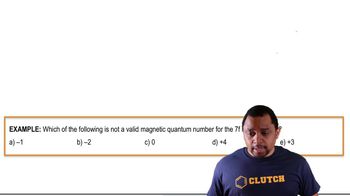Here are the essential concepts you must grasp in order to answer the question correctly.
Molecular Orbital Theory
Molecular Orbital Theory describes how atomic orbitals combine to form molecular orbitals, which can be occupied by electrons. In diatomic molecules, these orbitals are arranged in energy levels, and their occupancy determines the molecule's properties, including bond order and magnetic behavior. Understanding the energy ordering of these orbitals is crucial for predicting the stability and characteristics of the molecule.
Recommended video:
Bond Order
Bond order is a measure of the number of chemical bonds between a pair of atoms, calculated as half the difference between the number of bonding and antibonding electrons in a molecular orbital diagram. A higher bond order indicates a stronger bond and greater stability of the molecule. For a molecule with 12 valence electrons, determining the bond order involves filling the molecular orbitals according to their energy levels and counting the electrons appropriately.
Recommended video:
Magnetism in Molecules
The magnetic properties of a molecule, whether it is diamagnetic or paramagnetic, depend on the presence of unpaired electrons in its molecular orbitals. Diamagnetic molecules have all electrons paired and are not attracted to a magnetic field, while paramagnetic molecules contain unpaired electrons and are attracted to magnetic fields. Analyzing the electron configuration from the molecular orbital diagram helps predict the magnetic behavior of the molecule or ion.
Recommended video:
 Tro 6th Edition
Tro 6th Edition Ch.11 - Chemical Bonding II: Molecular Shapes, VSEPR & MO Theory
Ch.11 - Chemical Bonding II: Molecular Shapes, VSEPR & MO Theory Problem 8
Problem 8 Verified step by step guidance
Verified step by step guidance

